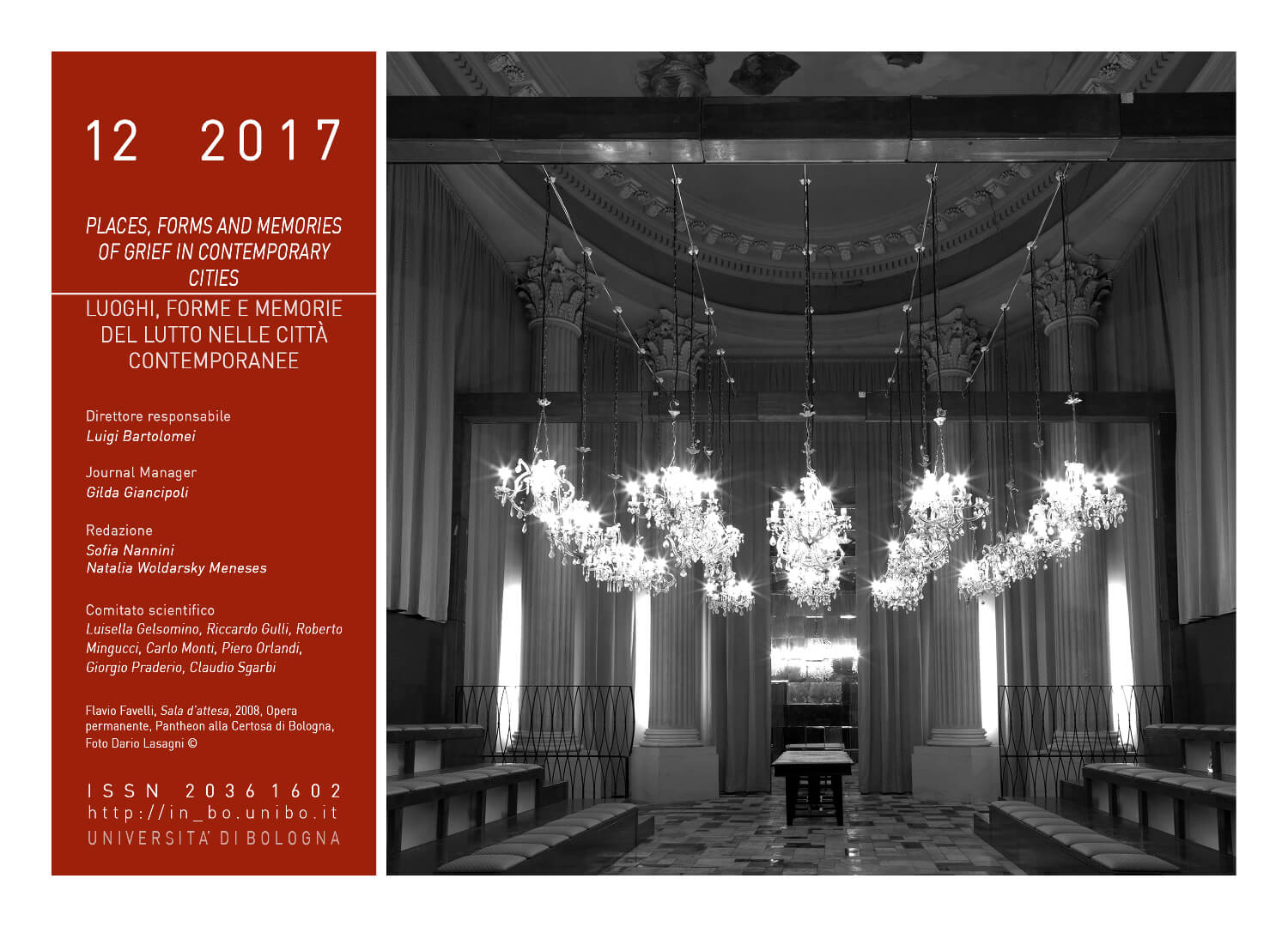Il mutato lutto della Guerra di Secessione: l’apertura dei memoriali a nuovi significati
DOI:
https://doi.org/10.6092/issn.2036-1602/7859Parole chiave:
Memoria sociale, Commemorazione, Memoriali di guerra, Guerra Civile Americana, SchiavitùAbstract
I memoriali della Guerra Civile negli Stati Uniti rappresentano la complessa memoria nazionale di una guerra intestina, tutt’ora contestata, su questioni di schiavitù, equità sociale e valori pubblici. Oggi si assiste a un acceso dibattito sui monumenti che onorano i comandanti e i soldati confederati. Per molti, la memoria sociale originale è scomparsa e i significati ad essi attribuiti si sono spostati dalla relazione con i caduti di guerra, o dal culto della “causa persa”, a simboli di schiavitù e di supremazia bianca. Le loro forme sono aperte a nuove interpretazioni legate alla soggettività umana e alla loro localizzazione. Questi memoriali glorificano il razzismo o assorbono la memoria storica del lutto? Questo articolo esamina il dibattito in corso sui memoriali della Guerra di Secessione, come prova del ruolo potente dei monumenti nella città e del loro mutevole significato.Riferimenti bibliografici
Southern Poverty Law Center, Whose Heritage? Public Symbols of the Confederacy, Montgomery, Alabama, 2016, p. 8
Guy Guggliotta, “New Estimate Raises Civil War Death Toll” in The New York Times, April 12, 2012
David Blight, Race and Reunion: The Civil War in American Memory, Harvard University Press, Cambridge, 2001, p. 64.
Also see John Bodnar, Remaking America: Public Memory, Commemoration, and Patriotism in the Twentieth Century, Princeton University Press, Princeton, 1992
Yi-Fu Tuan, “The Significance of the Artifact” in Geographical Review, 1980, 70(4), pp. 466
James Mayo, “War Memorials as Political Memory” in Geographical Review, January 1988, 78(1), p. 62
Kenneth E. Foote, Shadowed Ground: America’s Landscapes of Violence and Tragedy, The University of Texas Press, Austin, 1997
David Lowenthal, The Past is a Foreign Country, Cambridge University Press, Cambridge, 1985; Svetlana Boym, The Future of Nostalgia, Basic Books, New York, 2002; and Paul Ricoeur, Memory, History, Forgetting, University of Chicago Press, Chicago, 2004
Thomas E. Schott, Alexander H. Stephens of Georgia: A Biography, Louisiana State University Press, Baton Rouge and London, 1996, p. 334
William H. Wilson, The City Beautiful Movement, The Johns Hopkins University Press, Baltimore, 1989; Charles Mulford Robinson, Modern Civic Art: Or, The City Made Beautiful, G.P. Putnam’s Sons, New York and London, 1903; and Peter Hall, Cities of Tomorrow, Wiley-Blackwell, London, 2002
Mitch Landrieu, “Mitch Landrieu’s Speech on the Removal of Confederate Monuments in New Orleans” in The New York Times, May 23, 2017
Associated Press, “In New Orleans, Confederate Monuments are Finally Gone” in New York Post, May 20, 2017
Sophie Abramowitz, Eva Latterner, and Gillet Rosenblith, “Tools of Displacement” in Slate, June 23, 2017
Megan Garber, “Why Charlottesville?” in The Atlantic, August 12, 2017
Jacey Fortin, “The Statue at the Center of Charlottesville’s Storm” in The New York Times, August 13, 2017; Dahlia Lithwick, “They will not Replace Us” in Slate, August 13, 2017; Benjamin Wallace-Wells, “The Fight over Virginia’s Confederate Monuments” in The New Yorker, December 4, 2017
David A. Graham, “Durham’s Confederate Statue Comes Down” in The Atlantic, August 15, 2017; Maggie Astor, “Protesters in Durham Topple a Confederate Monument” in The New York Times, August 14, 2017
Nicholas Fandos, Richard Fausset and Alan Blinder, “Charlottesville Violence Spurs New Resistance to Confederate Symbols” in The New York Times, August 16, 2017
Bill Niven, “War Memorials At The Intersection Of Politics, Culture And Memory” in Journal of War & Culture Studies, 2007, 1(1), pp. 39-45; Isaac Stanley-Becker. “Rewriting History or Attending to the Past? Monuments still Confound Europe, Too” in The Washington Post, August 19, 2017
Downloads
Pubblicato
Come citare
Fascicolo
Sezione
Licenza
Copyright (c) 2018 Phoebe Crisman
I diritti d'autore e di pubblicazione di tutti i testi pubblicati dalla rivista appartengono ai rispettivi autori senza alcuna restrizione.
Questa rivista è distribuita con licenza Creative Commons Attribuzione - Non commerciale 4.0 Internazionale (licenza completa).
Vedere anche la nostra Open Access Policy.
Metadati
Tutti i metadati dei materiali pubblicati sono rilasciati in pubblico dominio e possono essere utilizzati da ognuno per qualsiasi scopo. Questi includono i riferimenti bibliografici.
I metadati – riferimenti bibliografici inclusi – possono essere riutilizzati in qualsiasi formato senza ulteriori autorizzazioni, incluso per scopo di lucro. Chiediamo cortesemente agli utenti di includere un collegamento ai metadati originali.






